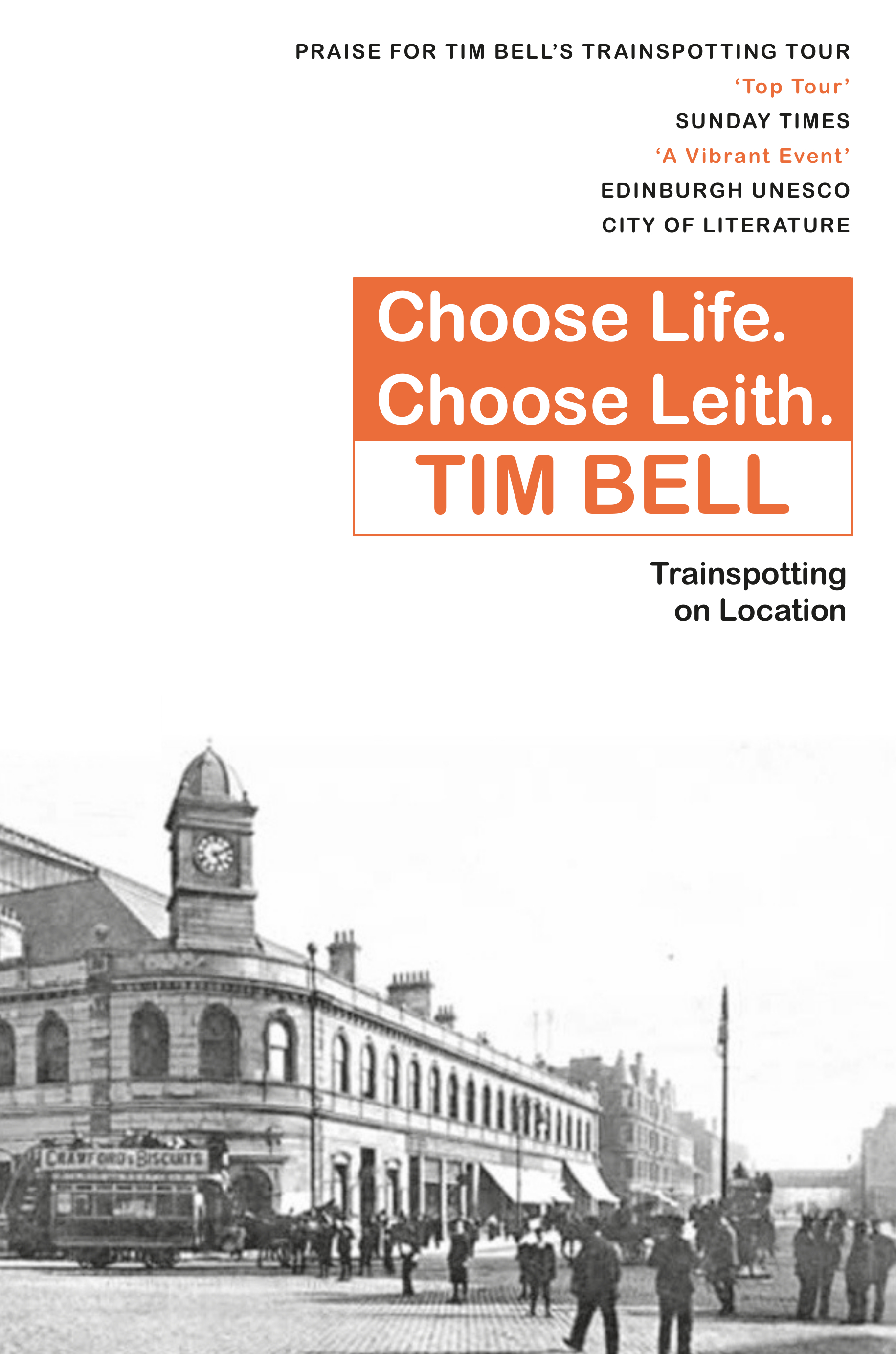From Chapter 1: Leith Central Station
You can go to exactly the spot where the photographer stood to take the shot on the front cover of Leith Central Station and the Foot of Leith Walk. The horse-drawn tram dates it to no later than 1904, that is within a year of the opening of the station. You are standing in the heart of Leith and at the heart of Trainspotting. The Heart of Leith, the Foot of Leith Walk, and Leith Central Station all their have distinctive meanings but they can easily be pretty well synonymous.
Irvine Welsh uses this location to pin together his story Trainspotting. The small figure on the far pavement at the lower right edge of the shot (the image has been cropped too much; the figure is to the right of the man at the lower right edge) stands at the taxi rank where Renton fulminates in the first episode: ‘Supposed to be a fuckin taxi rank. Nivir fuckin git one in the summer… Taxi drivers. Money-grabbin bastards…’ (p.4). Leith Central Station is the most emphatically identified location in the entire book. Directly opposite the taxi rank, out of sight up the opening at the end of the terrace beyond the third awning, Renton and Begbie go up the ramp that ran along the gable end into the derelict station at first floor level, for the ghostly figure to suggest that they are there to spot trains. One of the most moving tours I ever did was with a recovering alcoholic. On what remains of the ramp I talked him through the literary situation, and I had to leave him alone with his thoughts for quite a while as he looked across the street and considered the implications for himself of being brought back to where he began…
Whether it was arranged or not, the potency of this image lies in the line of boys and men, all with their caps on, stretching from the heart of the throbbing old town, across this social arena and fulcrum of the town’s comings and goings, to Leith’s magnificent entry to the wider world. This brings us to Leith Central Station, so central to Trainspotting. To have a full appreciation of the metaphor Welsh works in lifting an obscure, enigmatic word from a page towards the back of the book onto its title page, we need an understanding of its massive, useless, elusive, vainglorious and dysfunctional purpose and presence at the heart of Leith…
From Chapter 2: Leith Junkies
Let’s re-imagine the Edwardian photograph. Now we see a line of 1980s Leith junkies, stretched out between home and the doorway to faraway places where problems are left behind. Their access, whether the station or heroin, is there, just a step over the road, a presence that’s impossible to miss, with easy access despite the closed doors, and a dark, dirty and disordered interior, deplored by most people. Home for them is neither secure nor satisfying; demolitions and dispersals characterise their environment, and few have had the opportunity to embark on rewarding and purposeful careers. They have been brought up hearing Mrs Thatcher’s rhetoric on the right to choose, that everyone has consumer options – not that they have had many……. Just as we can imagine that some of the men in the Edwardian photograph died in the First World War, so some of the 1980s junkies died, whether by overdose or with HIV/AIDS or some associated complication. However, Fred, Audrey and Donnie, who are all within a very few years contemporaries of Welsh, knew the Foot of Leith Walk in their junkie days and survived at least 20 years, have agreed to let me recount their stories. Their names are changed.

